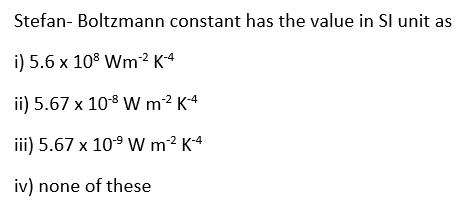Question
Which of the following symbols should be placed in the
blank spaces respectively (in the same order from left to right) to complete the given expression in such a manner that the expression L ≤ N as well as J < H are definitely true? H.....N....F....J....L Study the given information carefully to answer the given question.Solution
1) H = N > F = J > L. ∴ N > L & H > J . Hence, option 1 is false. 2) H > N = F = J ≥ L. ∴ N ≥ L & H > J . Hence, option 2 is true. 3) H ≤ N < F = J ≤ L. ∴ L > N & J > H . Hence, option 3 is false. 4) H > N ≥ F < J = L.No relationship can be established between N and L & J and H. Hence, option 4 is false.
When a detergent is added to pure water, its surface tension –
The red colour of onion is caused by the presence of which pigment?
A point located 5cm away from a source of sinusoidal oscillations has a displacement equal to half of the maximum amplitude at time t=T/4 (where T is th...
What is used in cloud seeding to produce artificial rain?
The SI unit of mechanical power is:
Which one of the following physical quantities is the same for molecules of all gases at a given temperature?
Which of the following element is found in maximum percentage in the human body?

Which part of the brain is responsible for balance and coordination?
What is the minimum distance one has to stand at from a wall to hear an echo?
Relevant for Exams:



